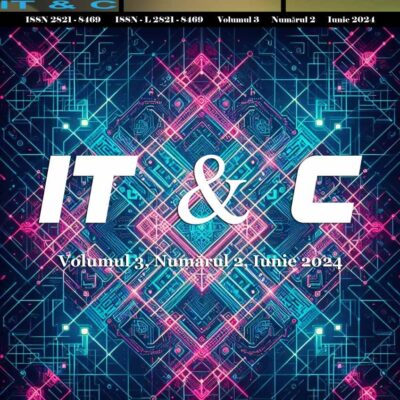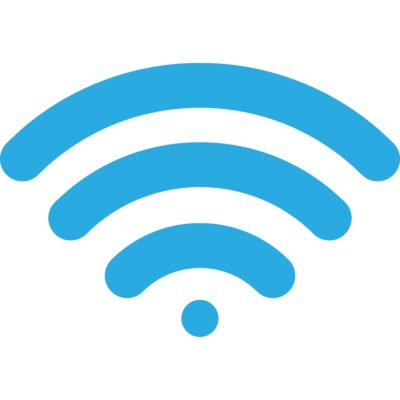 Sfetcu, Nicolae (2024), The Revolutionary Role of Blockchain Technology in Communication, IT & C, 3:1, 40-46, DOI: 10.58679/IT88509, https://www.internetmobile.ro/the-revolutionary-role-of-blockchain-technology-in-communication/
Sfetcu, Nicolae (2024), The Revolutionary Role of Blockchain Technology in Communication, IT & C, 3:1, 40-46, DOI: 10.58679/IT88509, https://www.internetmobile.ro/the-revolutionary-role-of-blockchain-technology-in-communication/
Abstract
Communication is the cornerstone of human interaction, and as technology advances, so does the way we connect with each other. One of the most groundbreaking innovations in recent years is blockchain technology, initially designed to underpin cryptocurrencies like Bitcoin. However, its applications extend far beyond the financial sector. This essay explores the transformative impact of blockchain technology on communication, examining its key features, benefits, and potential challenges. Starting with 2014, new technology applications have been developed for more sophisticated smart contracts that share documents or automatically send owners’ dividends if profits reach a certain level, and communication.
Keywords: blockchain, blockchain technology, communication, cryptocurrencies, cryptographic messages
Rolul revoluționar al tehnologiei blockchain în comunicare
Rezumat
Comunicarea este piatra de temelie a interacțiunii umane și, pe măsură ce tehnologia avansează, la fel crește și modul în care ne conectăm unul cu celălalt. Una dintre cele mai inovatoare inovații din ultimii ani este tehnologia blockchain, concepută inițial pentru a susține criptomonede precum Bitcoin. Cu toate acestea, aplicațiile sale se extind cu mult dincolo de sectorul financiar. Acest eseu explorează impactul transformator al tehnologiei blockchain asupra comunicării, examinând caracteristicile sale cheie, beneficiile și provocările potențiale. Începând cu 2014, au fost dezvoltate noi aplicații tehnologice pentru contracte inteligente mai sofisticate care partajează documente sau trimit automat dividende proprietarilor dacă profiturile ating un anumit nivel și comunicare.
Cuvinte cheie: blockchain, tehnologie blockchain, comunicații, criptomonede, mesaje criptografice
IT & C, Volumul 3, Numărul 1, Martie 2024, pp. 40-46
ISSN 2821 – 8469, ISSN – L 2821 – 8469, DOI: 10.58679/IT88509
URL: https://www.internetmobile.ro/the-revolutionary-role-of-blockchain-technology-in-communication/
© 2024 Nicolae Sfetcu. Responsabilitatea conținutului, interpretărilor și opiniilor exprimate revine exclusiv autorilor.
The Revolutionary Role of Blockchain Technology in Communication
Ing. fiz. Nicolae SFETCU[1], MPhil
nicolae@sfetcu.com
[1] Cercetător – Academia Română – Comitetul Român de Istoria și Filosofia Științei și Tehnicii (CRIFST), Divizia de Istoria Științei (DIS), ORCID: 0000-0002-0162-9973
Introduction
Communication is the cornerstone of human interaction, and as technology advances, so does the way we connect with each other. One of the most groundbreaking innovations in recent years is blockchain technology, initially designed to underpin cryptocurrencies like Bitcoin. However, its applications extend far beyond the financial sector. This essay explores the transformative impact of blockchain technology on communication, examining its key features, benefits, and potential challenges.
The first blockchain was conceptualized by Satoshi Nakamoto in 2008, using a method that excludes an authorized third party. (Narayanan et al. 2016) In 2009, Nakamoto developed Bitcoin, used as a public register for network transactions. (The Economist 2015)
Starting with 2014, new technology applications (Nian and Chuen 2015) have been developed for more sophisticated smart contracts that share documents or automatically send owners’ dividends if profits reach a certain level, and communication. In Philosophical Engineering: Toward a Philosophy of the Web, Halpin and Monnin discussed some philosophical aspects of this emerging technology, (Halpin and Monnin 2014) such as the relationship between the physical world and the virtual world, the individual and society, the concepts of materiality, temporality, space and possibility. (Institute for Blockchain Studies 2016) We can ask ourselves, ontologically, what this technology is, how it can be characterized, how it is created, implemented and adopted, and how it works; definitions, classifications, possibilities and limitations. From an epistemological point of view, we are concerned about what knowledge can be gained through BT, how it is in relation to reality, what knowledge involves the use of technology, etc. We are also interested in how BT can be exploited, which aspects allow an assessment, what behavioral norms involve, aesthetic and moral aspects involved in the use of this technology. The philosophy of BT can be seen as a conceptual resource for understanding these developments in our modern world. (Swan and Filippi 2017) Conceptual metaphors can help us approach and understand new ideas. (Lakoff and Johnson 2003)
Understanding Blockchain Technology
Blockchain is a decentralized and distributed ledger technology that allows secure and transparent record-keeping. It consists of a chain of blocks, each containing a list of transactions or data, linked together through cryptographic hashes. What sets blockchain apart is its decentralized nature, making it resistant to tampering, fraud, and censorship.
Blockchain, (The Economist 2015) (Morris 2016) (Popper 2017) initially called chain of blocks (Brito and Castillo 2016) (Trottier [2013] 2018) is a growing list of records called blocks, communicating with each other by cryptographic messages. (The Economist 2015) Each block contains a cryptographic hash of the previous block, (Narayanan et al. 2016) a time stamp and transaction data.
Enhancing Security and Privacy
One of the primary advantages of employing blockchain in communication is the heightened security it offers. Traditional communication channels often face threats like data breaches and unauthorized access. Blockchain, with its encryption and consensus mechanisms, ensures the integrity of information and protects against unauthorized alterations. This heightened security is particularly crucial in sensitive sectors such as healthcare, where patient data confidentiality is paramount.
By design, a blockchain is „an open, distributed ledger that can record transactions between two parties efficiently and in a verifiable and permanent way”, (Iansiti and Lakhani 2017) usually managed by a peer-to-peer network adhering to a protocol for node communication and validation of new blocks. After recording, the data in each block it cannot be modified retrospectively without changing all subsequent blocks, which requires network consensus. Blockchain can be considered a secure design system, distributed, with high error tolerance. (Raval 2016) Block cryptography uses public keys. (Brito and Castillo 2016) Private keys allow owners to access their digital assets or the ability to interact within the blockchain. (The Economist 2015)
Decentralization and Resilience
Centralized communication systems are vulnerable to single points of failure and cyberattacks. Blockchain’s decentralized architecture distributes information across a network of nodes, reducing the risk of a catastrophic failure. This ensures that communication channels remain operational even in the face of natural disasters or deliberate attacks, contributing to increased system resilience.
Each node in a system has a copy of the blockchain. (Raval 2016) There is no central „official” copy, and no „trustworthy” user more than any other. (Brito and Castillo 2016) Mining nodes validate transactions, (Tapscott and Tapscott 2016) adds them to the block they are building and then spreads the block to other nodes. (Bhaskar and Chuen 2015) Blockchain uses various timestamp schemes, such as proof-of-work, to serialize the changes. (Gervais, Karame, and Capkun 2015)
Smart Contracts and Automation
Blockchain introduces the concept of smart contracts, self-executing agreements with predefined rules. In communication, smart contracts automate processes, reducing the need for intermediaries and streamlining interactions. For example, in supply chain communication, smart contracts can automatically trigger actions based on predefined conditions, improving efficiency and reducing delays.
Transparent and Traceable Transactions
Transparency is a critical aspect of effective communication. Blockchain’s transparent and immutable ledger allows participants to trace the history of transactions or information. This traceability fosters trust among stakeholders, whether in business negotiations, voting systems, or any other form of communication where transparency is essential.
Other emerging blockchain applications include e-government, such as Bitnation, (Allison 2015) initiatives for citizens involvement and new forms of democratic participation such as D-Cent (D-Cent 2015) and digital platforms for creating diverse decentralized applications, such as Ethereum platform. (Wood 2014) Blockchain technology is considered to have a particularly important contribution to the future transformation of organizations, democratic governance and human culture as a whole. (Tapscott, Tapscott, and Cummings 2017)
Challenges and Considerations
While blockchain technology offers numerous advantages, it is not without challenges. Scalability, energy consumption, and regulatory uncertainties are areas that require further exploration and development. Additionally, the integration of blockchain into existing communication infrastructures may face resistance due to established norms and practices.
According to statistics synthesized by the World Economic Forum, interest in the blockchain has expanded globally, (WEF Financial Services 2016) nearly 30 countries are currently investing in blockchain projects.
There are three types of blockchains – public (no access restriction), private (access based on invitation by network administrators, participants and validators are restricted), and consortium (semi-decentralized, with limited chain access)
Conclusion
The Internet has completely changed the world, people’s culture and customs. After a first phase characterized by the free transfer of information, concerns have arisen about the security of online communications and the confidentiality of users. Blockchain technology ensures both these goals. Blockchain technology, relatively new, has the chance to produce a new revolution, fully justifying a philosophical investigation.
Blockchain technology has emerged as a disruptive force in communication, offering enhanced security, decentralization, and automation. As we navigate an increasingly interconnected world, the potential applications of blockchain in communication are vast and diverse. While challenges exist, ongoing research and development are likely to address these issues, paving the way for a more secure, transparent, and efficient communication landscape. As we embrace the era of blockchain, the transformative impact on communication processes is set to redefine the way we connect and collaborate.
Bibliography
- Allison, Ian. 2015. “Decentralised Government Project Bitnation Offers Refugees Blockchain IDs and Bitcoin Debit Cards.” International Business Times UK. 2015. https://www.ibtimes.co.uk/decentralised-government-project-bitnation-offers-refugees-blockchain-ids-bitcoin-debit-cards-1526547.
- Bhaskar, Nirupama Devi, and David LEE Kuo Chuen. 2015. “Bitcoin Mining Technology.” In Handbook of Digital Currency, edited by David Lee Kuo Chuen, 45–65. San Diego: Academic Press. https://doi.org/10.1016/B978-0-12-802117-0.00003-5.
- Brito, Jerry, and Andrea Castillo. 2016. Bitcoin: A Primer for Policymakers. 2 edition. Arlington, Virginia: Mercatus Center at George Mason University.
- D-Cent. 2015. “Tools for Democratic Participation and Citizen Empowerment.” https://dcentproject.eu/wp-content/uploads/2015/10/publishable-summary-10-2015-for-web.pdf.
- Gervais, Arthur, Ghassan Karame, and Vedran Capkun. 2015. “Is Bitcoin a Decentralized Currency?” ResearchGate. 2015. https://www.researchgate.net/publication/270802537_Is_Bitcoin_a_Decentralized_Currency.
- Halpin, Harry, and Alexandre Monnin. 2014. “Philosophical Engineering: Toward a Philosophy of the Web.” Wiley.Com. 2014. https://www.wiley.com/en-ro/Philosophical+Engineering%3A+Toward+a+Philosophy+of+the+Web-p-9781118700181.
- Iansiti, Marco, and Karim R. Lakhani. 2017. “The Truth About Blockchain.” Harvard Business Review, 2017. https://hbr.org/2017/01/the-truth-about-blockchain.
- Institute for Blockchain Studies. 2016. “Blockchain Philosophy – Institute for Blockchain Studies Website.” 2016. http://blockchainstudies.org/BlockchainPhilosophy.html.
- Lakoff, Johnson, and Mark Johnson. 2003. “Metaphors We Live.” 2003. https://www.press.uchicago.edu/ucp/books/book/chicago/M/bo3637992.html.
- Morris, David Z. 2016. “Leaderless, Blockchain-Based Venture Capital Fund Raises $100 Million, And Counting.” Fortune. 2016. http://fortune.com/2016/05/15/leaderless-blockchain-vc-fund/.
- Narayanan, Arvind, Joseph Bonneau, Edward Felten, Andrew Miller, and Steven Goldfeder. 2016. Bitcoin and Cryptocurrency Technologies: A Comprehensive Introduction. Princeton University Press.
- Nian, Lam Pak, and David Lee Kuo Chuen. 2015. “A Light Touch of Regulation for Virtual Currencies | Request PDF.” ResearchGate. 2015. https://www.researchgate.net/publication/286055684_A_Light_Touch_of_Regulation_for_Virtual_Currencies.
- Popper, Nathaniel. 2017. “A Venture Fund With Plenty of Virtual Capital, but No Capitalist.” The New York Times, 2017, sec. Business. https://www.nytimes.com/2016/05/22/business/dealbook/crypto-ether-bitcoin-currency.html.
- Raval, Siraj. 2016. Decentralized Applications: Harnessing Bitcoin’s Blockchain Technology. O’Reilly Media, Inc.
- Swan, Melanie, and Primavera de Filippi. 2017. “Toward a Philosophy of Blockchain: A Symposium: Introduction.” Metaphilosophy 48 (5): 603–19.
- Tapscott, Don, and Alex Tapscott. 2016. “Here’s Why Blockchains Will Change the World.” Fortune. 2016. http://fortune.com/2016/05/08/why-blockchains-will-change-the-world/.
- Tapscott, Don, Alex Tapscott, and Jeff Cummings. 2017. Blockchain Revolution: How the Technology Behind Bitcoin and Other Cryptocurrencies Is Changing the World. Unabridged edition. Brilliance Audio.
- The Economist. 2015. “The Great Chain of Being Sure about Things.” The Economist, 2015. https://www.economist.com/briefing/2015/10/31/the-great-chain-of-being-sure-about-things.
- Trottier, Leo. (2013) 2018. “Historical Repository of Satoshi Nakamoto’s Original Bitcoin.” C++. https://github.com/trottier/original-bitcoin.
- WEF Financial Services. 2016. “The Future of Financial Infrastructure. An Ambitious Look at How Blockchain Can Reshape Financial Services. Technical Report, WEF, 2016.” http://www3.weforum.org/docs/WEF_The_future_of_financial_infrastructure.pdf.
- Wood, D. 2014. “Ethereum: A Secure Decentralised Generalised Transaction Ledger.”
![]() Articol cu Acces Deschis (Open Access) distribuit în conformitate cu termenii licenței de atribuire Creative Commons CC BY SA 4.0 (https://creativecommons.org/licenses/by-sa/4.0/).
Articol cu Acces Deschis (Open Access) distribuit în conformitate cu termenii licenței de atribuire Creative Commons CC BY SA 4.0 (https://creativecommons.org/licenses/by-sa/4.0/).



Lasă un răspuns